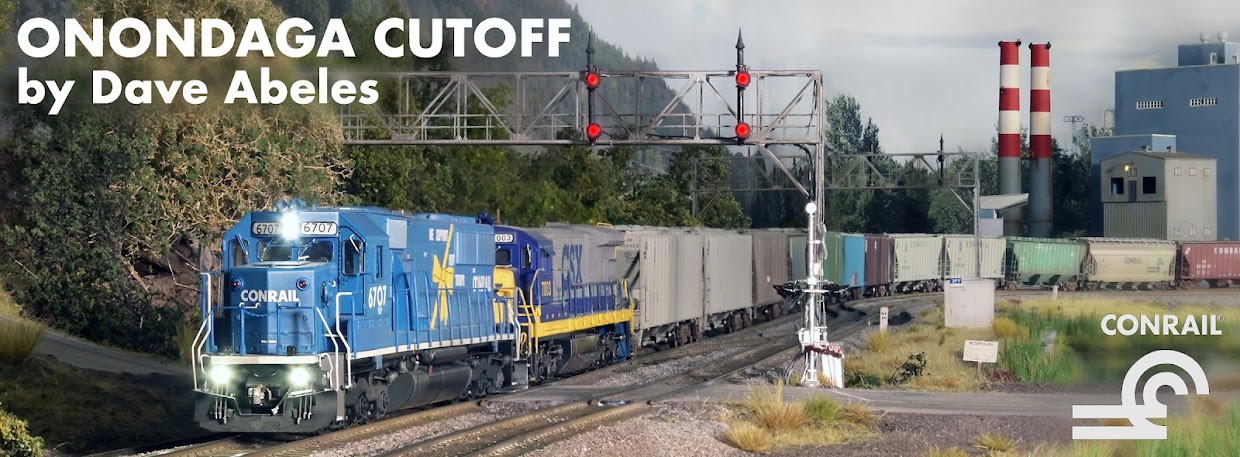On the Onondaga Cutoff, one of my most important jobs is to make repairs as needed to equipment and infrastructure that has issues. Whether due to heavy use, accident, human error, or malfunction, issues crop up that either damage or highlight poor condition of various layout items.
For operation sessions to be satisfying, the layout and equipment need to work reliably, with as few mechanical and electrical issues as possible. Track must be clean and well-aligned. Switches must throw completely, and consistently. Equipment must have clean wheels and be tuned for operation on grades with heavy trains.
Prototype railroads use a term used to plan for and fund maintenance items. 'State of Good Repair' (SOGR) applies to assets that are able to be maintained in a usable condition in perpetuity, throughout the useful life of the asset. This is a living, breathing idea - many variables need to be considered, and the capital dollars needed to upgrade an asset to reach a state of good repair need to be balanced against what the company can afford.
We need a 'SOGR' for our layouts, too. Here we have SD60I 5626, an Athearn Genesis model that has performed for years on the layout. As happens occasionally, the sound decoder in this one suddenly stopped working. The unit would make noise but not move. After troubleshooting, I found its address in an old consist. A quick deletion of the old consist fixed that. I went further and added a 'keep alive' capacitor system to the sound decoder to help smooth operations. Now, the 5626 is resting outside Onondaga Engine Terminal, suggesting recent repairs, and in reality it is ready to rejoin the fleet!
The right-of-way too needs occasional adjustment to be in a state of good repair. Here, Foreman Homoki waits for an addition to his NORAC Form D before proceeding past CP277 during the last operating session. During operating sessions, we can model the maintenance process used on the prototype with hi-rail inspections, work trains, and the like. While most of the SOGR maintenance happens between sessions, it is fun to include a model of the work so that operators get a taste of what the prototype does.
I consistently measure and check switch points for proper alignment and motion, as well as monitoring light from signals and structures to ensure what is supposed to be lit actually is lit.
Even with maintenance operations, we can suggest a prototypical experience. Operations doesn't have to be all moving trains - a State of Good Repair takes time and effort on the prototype, and we can effectively share that experience and the challenges it creates with others at our sessions.



No comments:
Post a Comment